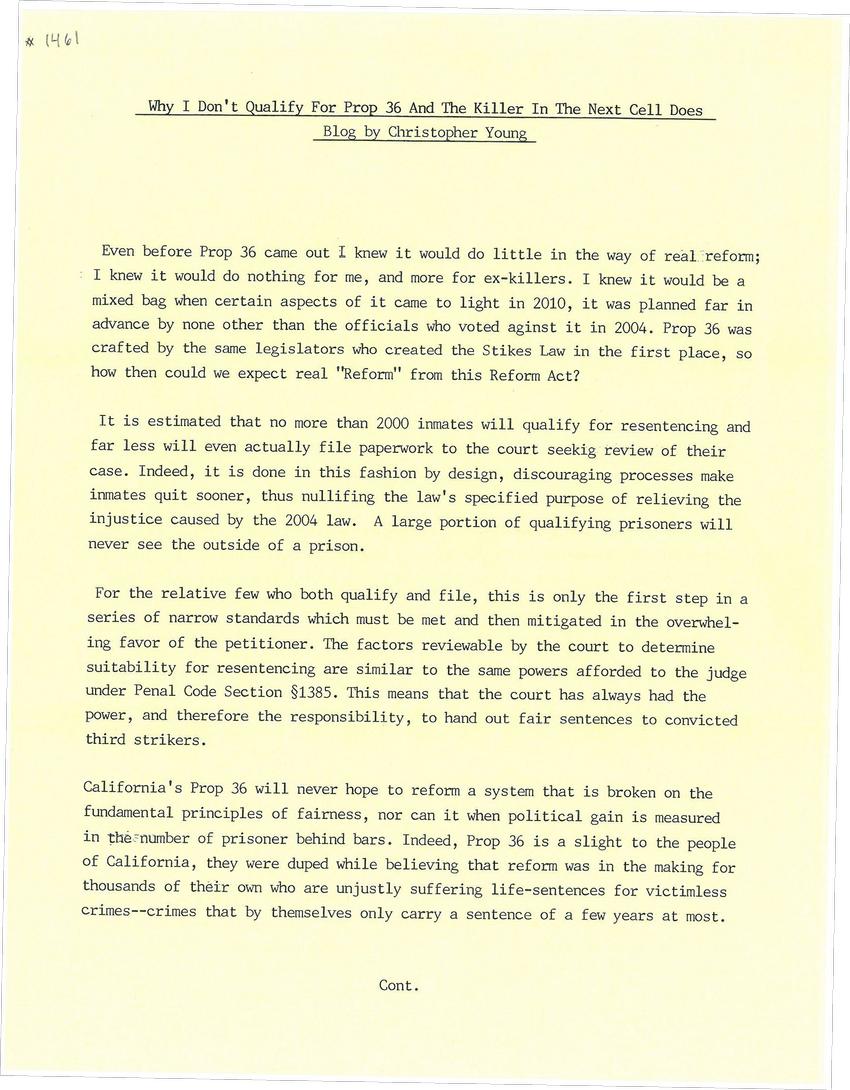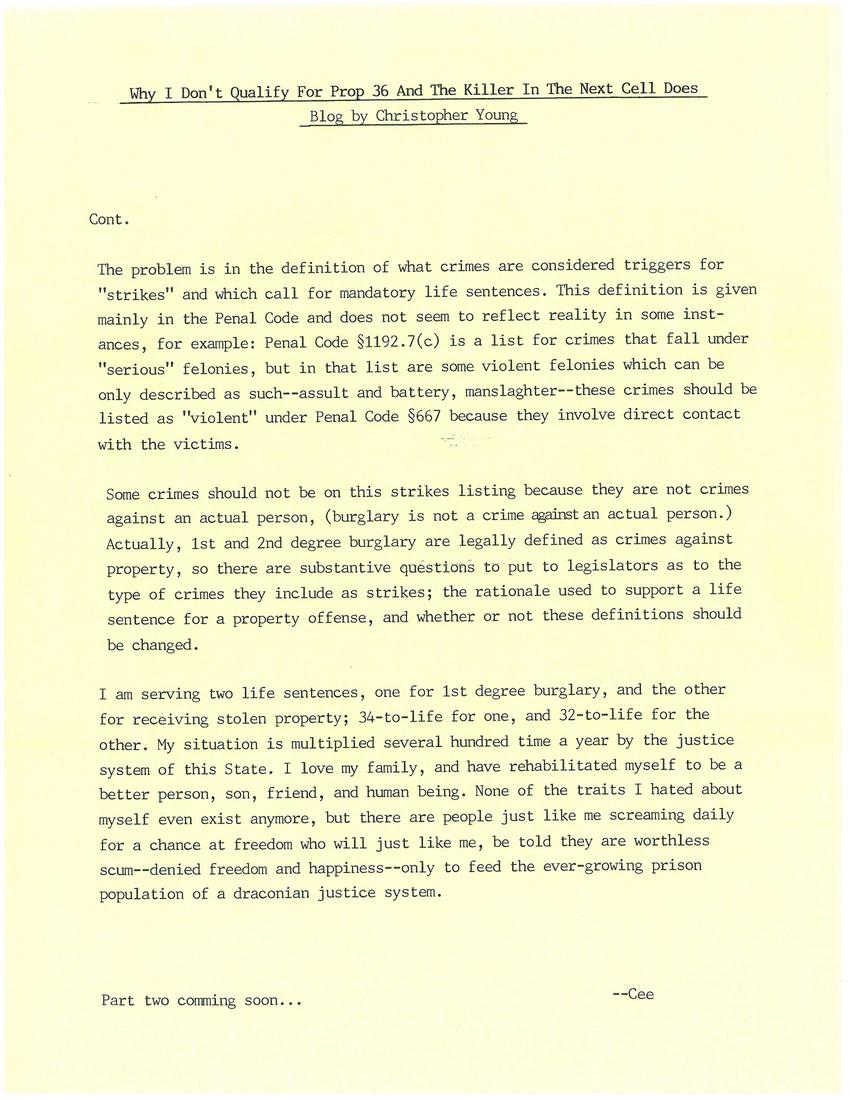
Transcription
Why I Don't Qualify for Prop 36 and the Killer in the Next Cell Does
Blog by Christopher Young
Even before Prop 36 came out I knew it would do little in the way of real reform; I knew it would do nothing for me, and more for ex-killers. I knew it would be a mixed bag when certain aspects of it came to light in 2010, it was planned far in advance by none other than the officials who voted against it in 2004. Prop 36 was crafted by the same legislators who created the Stikes Law in the first place, so how then could we expect real "reform" from this Reform Act?
It is estimated that no more than 200 inmates will qualify for re-sentencing and far less will even actually file paperwork to the court seeking review of their case. Indeed, it is done in this fashion by design, discouraging processes make inmates quit sooner, thus nullifying the law's specified purpose of relieving the injustice caused by the 2004 law. A large portion of qualifying prisoners will never see the outside of prison.
For the relative few who qualify and file, this is only the first step in a series of narrow standards which must be met and then mitigated in the overwhelming favour for the petitioner. The factors reviewable by the court to determine suitability for re-sentencing are similar to the same powers afforded to the judge under Penal Code Section 1385. This means that the court has always had the power, and therefore responsibility, to hand out fair sentences to convicted third strikers.
California's Prop 36 will never hope to reform a system that is broken on the fundamental principles of fairness, nor can it when political gain is measured in the number of prisoners behind bars. Indeed, Prop 36 is a slight to the people of California, they were duped while believing that reform was in the making for thousands of their own who are unjustly suffering life sentences for victimless crimes - crimes that by themselves only carry a sentence of a few years at most.
The problem is the definition of what crimes are considered triggers for "strikes" and which call for mandatory life sentences. This definition is given mainly in the Penal Code and does not seem to reflect reality in some instances, for example: Penal Code 1192.7(c) is a list for crimes that fall under "serious" felonies, but in that list are some violent felonies which can only be described as such - assault and battery, manslaughter - these crimes should be listed as "violent" under Penal Code 667 because they involve direct contact with the victims.
Some crimes should not be put on this strikes listing because they are not crimes against an actual person, (burglary is not a crime against an actual person). Actually, 1st and 2nd degree burglary are legally defined as crimes against property, so there are substantive questions to put to legislators as to the type of crimes they include as strikes; the rationale used to support a life sentence for a property offence, and whether or not these definitions should be changed.
I am serving two life sentences, one for 1st degree burglary, and the other for receiving stolen property; 34-to-life for one, and 32-to-life for the other. My situation if multiplied several hundred times a year by the justice system of this state. I love my family, have rehabilitated myself to be a better person, son, friend, and human being. None of the traits I hated about myself even exist anymore, but there are people just like me screaming daily for a chance at freedom who will just like me, be told they are worthless scum - denied freedom and happiness - only to feed the ever-growing prison population of a draconian prison system.
Part two coming soon...
- Cee
Other posts by this author
|
2017 apr 29

|
2017 jan 4

|
2016 may 18

|
2016 mar 22

|
2016 mar 21

|
2015 may 31

|
More... |



Replies (1)